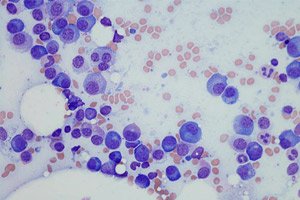
All iLive content is medically reviewed or fact checked to ensure as much factual accuracy as possible.
We have strict sourcing guidelines and only link to reputable media sites, academic research institutions and, whenever possible, medically peer reviewed studies. Note that the numbers in parentheses ([1], [2], etc.) are clickable links to these studies.
If you feel that any of our content is inaccurate, out-of-date, or otherwise questionable, please select it and press Ctrl + Enter.
How ovarian cancer cells adapt as they move through tissue
Last reviewed: 02.07.2025
 ">
">The spread of a tumor from its primary site to distant organs, called metastasis, has long been a mystery to scientists. Only now are researchers beginning to identify the mechanisms and triggers that initiate this process.
A new study by scientists at the Indian Institute of Science (IISc) reveals how innate differences in cancer cells and their interactions with their environment determine their ability to migrate. The findings, published in the Biophysical Journal, show that cancer cells adapt their mode of movement depending on the physical and biochemical characteristics of their microenvironment.
Main results of the study
Cell types and conditions:
- The researchers studied two types of ovarian cancer cells:
- OVCAR-3 - cells with a clearly defined polygonal shape.
- SK-OV-3 - cells with an elongated spindle-shaped form.
- Both cell types are capable of metastasis and tissue invasion.
- The cells were placed on soft and hard surfaces simulating healthy and diseased tissue.
Cell behavior:
- On soft surfaces:
- Cells of both types moved slowly and in random directions.
- On hard surfaces:
- The cells became more deformable.
- The behavior of the cells varied depending on their type:
- OVCAR-3 moved more actively than SK-OV-3, which was an unexpected result.
- OVCAR-3 has been found to have a unique movement pattern called "sliding."
- Unlike most cells, whose movement matches their shape, OVCAR-3 moved in directions that did not match their shape, as if they were "gliding."
New tool for cell migration analysis
The researchers developed a software tool that:
- Uses the concept of Shannon entropy to estimate the randomness of cell movement.
- Allows quantitative analysis of changes in cell behavior based on live tracking data.
- Makes the study of cell behavior easier and more accessible to other researchers.
Conclusions and Prospects
- Coupling between shape and movement: The study found that OVCAR-3 cells exhibit a less constrained coupling between shape and movement, allowing them to migrate in more diverse and unexpected ways.
- Future research: The scientists plan to study the collective dynamics of such cells in more complex 3D environments.
- Practical significance: These studies will help to better understand the pathology of ovarian cancer, a disease characterized by rapid metastasis and high mortality.
"We hope that our study will open up new avenues for the diagnosis and treatment of ovarian cancer," said lead study author Ramray Bhat.
